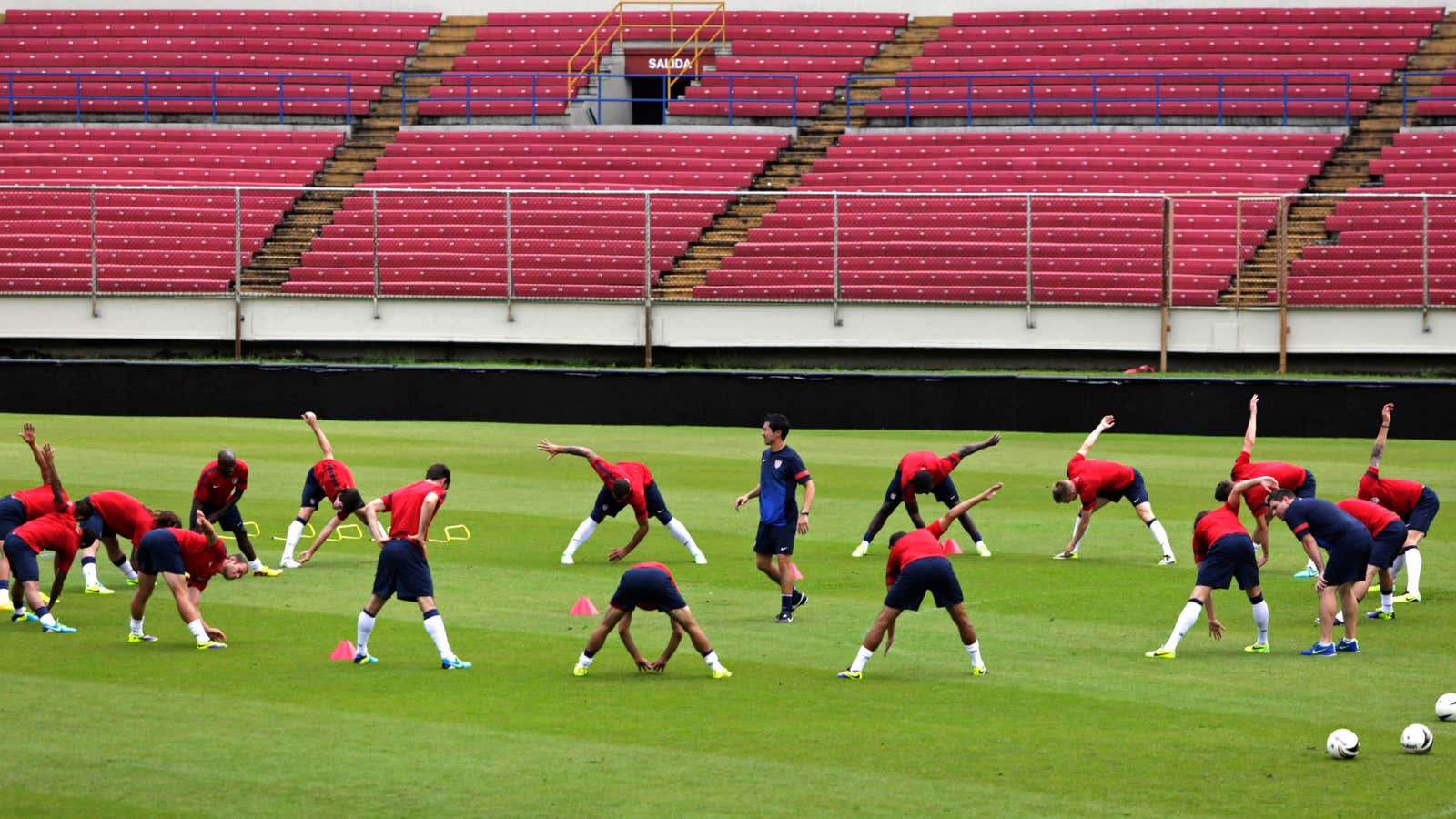Aside from the obvious health benefits, here’s one more reason to pick up a new sport: It can boost your employability and income.
According to a new paper published in the UK (pdf), sports participation is associated with both a higher access to employment and higher income opportunities. The paper also compares the correlation of job access and income to a number of different types of sports, including team sports, fitness-related sports, outdoor activities, indoor activities and leisure sports. By these measures, not all sports are created equal.
Team sports—soccer, cricket, rugby, volleyball and basketball, for example—contribute most to employability. People who participated in team sports were, on average, better educated and better employed than those who did not—team sports, for example, were associated with a 3.5% increase in employment. The reason, according to the research, is likely that participation in team sports is an indicator of openness to playing nice in other contexts, an important quality sought in job candidates. ”Comparing the different sports against each other reveals that team sports can contribute most to employability, perhaps by signaling teamwork,” it says.
Outdoor activities, on the other hand—including golf, canoeing, skiing, horse riding and hunting, contribute the most to income. The correlation was particularly strong for men of all ages and working age women. “Sports participation is associated with earnings increases for males and females of all ages of more than 10%,” the paper says.

Individuals who participate in outdoor sports earn on average about £5,200 ($8,422) more than those who don’t play any sports, and over £1000 more than those who partake in any of the other types of sport.
While the paper is clear about the link between sports participation and the structure of the labor market—specifically as it relates to employment and income—it also points out that the the correlation varies depending on both gender and age and is influenced by other factors like wealth. In other words, a more comfortable socio-economic background likely allows a person more time and money to pick up a golf club or rent skis. “Higher incomes and higher socio-economic status also tend to raise the participation rate and frequency of participation in sports,” the paper notes.
